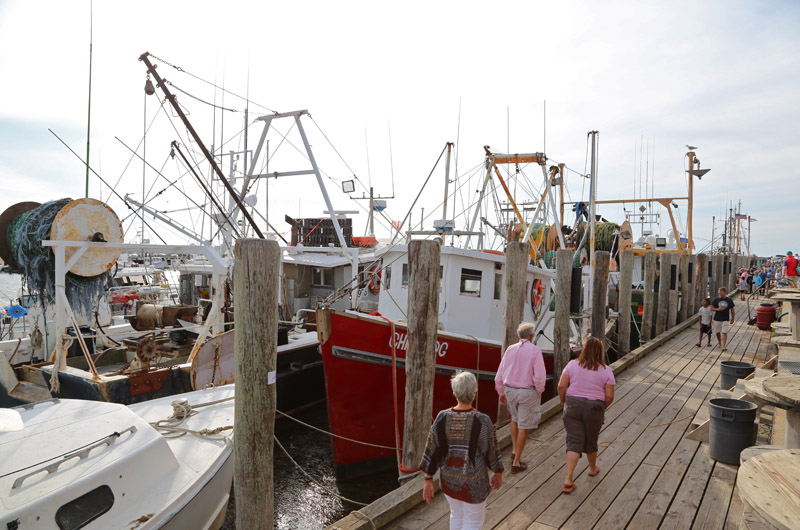Warming and acidifying ocean waters will negatively affect many fish and shellfish stocks in the Northeast in the coming years, a new study by the National Oceanic and Atmospheric Administration has found.
Released this week by the online journal PLOS-one, the NOAA report sheds light on how climate change is affecting marine species in the region and provides a basis for future research and management.

The Northeast U.S. Fisheries Climate Vulnerability Assessment evaluated 82 marine fish and invertebrate species along the northeast U.S. continental shelf, stretching from Cape Hatteras to the Gulf of Maine, for climate change vulnerability.
Many of the species found at risk live around the Vineyard, including winter flounder, scallops, lobsters, oysters and channeled whelk. As waters warm, those species are likely to suffer from reproduction problems and move to a different habitat, as has already begun to happen with summer flounder and sea bass, the report found. Meanwhile, ocean acidification poses a risk to shellfish by interfering with their ability to form shells. Other species, including squid and butterfish, will benefit from warming waters, the report found.
“This work will help us better account for the effects of warming waters on our fishery species in stock assessments and when developing fishery management measures,” said Jon Hare, a fisheries oceanographer at NOAA and a lead author of the study, in a statement.
The report is the first in a series that will include studies of other U.S. fishery regions. NOAA has made climate change a priority for study and planning future management of the fisheries. A large group of NOAA scientists prepared and analyzed the data.
Climate change was expected to negatively affect more than half the species in the study, although 14 species were expected to benefit from warmer temperatures and other factors. Surface dwellers, such as yellowtail flounder and cod, were considered more resilient because of their ability to move and survive in varying habitats. Species that live near the ocean floor or migrate between salt and fresh water were considered most at risk. Mollusks were among the most vulnerable due to their sensitivity to ocean acidification and their low mobility as adults.
Sea scallops, blue mussels, channeled whelks, eastern oysters and northern quahaugs were among the many negatively affected species.
The report points out that many changes in productivity and distribution have already been observed and will likely continue in the future. Conservation assumptions were used when it comes to rising water temperatures, scientists said, also noting that the report underscores the role of climate change in concert with fishing, habitat loss and other factors.
The Atlantic fisheries are managed by a series of regional councils governed by complicated rules and procedures. The councils rely on scientific data for decision making.
In 2013 the northeast U.S. continental shelf supported a $1.6 billion commercial fishing industry, the report said.
On the Vineyard the once-robust commercial fishing industry has been in a state of flux for years. Offshore fishing has seen dramatic declines, but in recent years there has been a resurgence in smaller-scale inshore fishing. A growing aquaculture movement, chiefly oyster farms in tidal saltwater ponds, has brought new economic hope for the future for small fishermen.
The NOAA report can be viewed at journals.plos.org.








Comments
Comment policy »